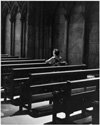A while back I posted something from "The Archaeological Album" I found on Google books. In particular, I was looking at The Burlesque Festivals of the Middle Ages. I thought today might be a good day to dig a little deeper and look at the "Feast of Fools." In it I found similarities to some present day church antics of the Episcopal church.
Any resemblance to persons living or dead is not totally coincidental.
FROM THE BURLESQUE FESTIVALS OF THE MIDDLE AGES. p 161
I I. THE FEAST OF FOOLS.
"The most celebrated and popular of the medieval Saturnalia was the feast of fools, sometimes termed in older writers the fete des sou-diacres, the word sou being here intended as pun on saoul (i. ane. drunken). An interesting treatise on the history of these festivals was published in 1741 by M. du Tilliot, under the title of "Memoires pour servir a l'histoire de la Fete des Fous, qui se faisoit autrefois dens plusieurs Eglises." The period at which this festival was celebrated varied between Christmas and the Epiphany, but it was most generally held on the first day of the year. It had an ecclesiastical character, evidently derived from the religious character of the ancient Saturnalia.
In the cathedral churches they elected a bishop or an archbishop of fools, and his election was confirmed with a multitude of ridiculous buffooneries, which served for a consecration, after which he was made to perform the pontifical duties, giving his public and solemn benediction to the people, before whom he carried the mitre and the crozier. In the exempt churches, or such as depended immediately on the holy see, they elected a pope of fools (unum papam fatuorum), to whom, with similar buffoonery, they gave the ornaments and ensigns of the papacy. These popes, bishops, and dignitaries, were assisted by a clergy equally licentious. They uttered and performed a strange mixture of follies and impieties during the service of the church, at which they attended that day in masquerade dresses and disguises. Some wore masks, or had their faces daubed and painted, to cause fear or mirth; while others were dressed in women's clothing, or in the garb of theatrical characters. On entering the choir they danced and sang songs of the most licentious description. The deacons and sub-deacons ate black-puddings and sausages on the altar while the priest was celebrating ; others played at cards and dice under his eyes; and others threw bits of old leather into the censer to make a disagreeable smell. After the mass was ended, they broke out into all kinds of riotous behaviour in the church, leaped, and danced, and exhibited themselves in indecent postures; and some went so far as to strip themselves naked, and in this condition they were drawn through the streets with tubs full of filth and ordure, which they threw about at the mob. Every now and then they stopped, and exhibited immodest postures and actions, accompanied with analogous songs and speeches. Many of the laity took part in the procession, dressed as monks and nuns. The day was finished with eating and drinking, which merged into all kinds of scandalous disorders, contributing little to the morality of the towns in which these ceremonies were performed. Such was the general character of the feast of fools.
Such also was the Society of Mother-fool (la Societe de la mere Tolle) at Dijon, founded in 1482; a number of curious documents relating to which were published by Du Tilliot, who has also given engravings of the standards, chariots, used by the company in their processions. The standard was painted with heads of fools, and bore for device the dictum of Solomon,
Stultorum infinitus est Numerus." - from Ecclesiastes 1:15 (Douay-Rheims 1899 American Edition)
The perverse are hard to be corrected, and the number of fools is infinite.




Nice historical round-up: the perfect synopsis of the event for non medievalists.
ReplyDeleteCheers.
Medievalists are welcome too. This is a "welcoming" blog (that's a little inside Episcobabble joke).
ReplyDelete